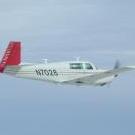Shock disk tower bolt/bushing/nut
-
Members Online
- mmcdaniel33
- paulsmeds
- hammdo
- pkellercfii
- jamesyql
- N.Nelson
- Bartman
- Adam Belle
- Lax291
- Flyler
- N201MKTurbo
- Skyland
- dkkim73
- hoot777
- affricate
- MikeOH
- Mikey30V
- Kelpro999
- Rmfriday
- crustymuffin
- Chaseford10
- KLRDMD
- Smiles201
- Guy123
- FlyingScot
- Denis Mexted
- TCC
- Brandon t
- hubcap
- Grant_Waite
- Jeff Uphoff
- Pasturepilot
- KSMooniac
- philiplane
- TNdebdriver
- Jamesp
- Hradec
- bigmo
- Joshua Blackh4t
- takair
- jetdriven
- T. Peterson
- DXB
- redbaron1982
- spistora
- 47U
- MB65E
- toto
- Parker_Woodruff
- LANCECASPER
- Ron McBride
- Austintatious
- donkaye


Recommended Posts
Join the conversation
You can post now and register later. If you have an account, sign in now to post with your account.